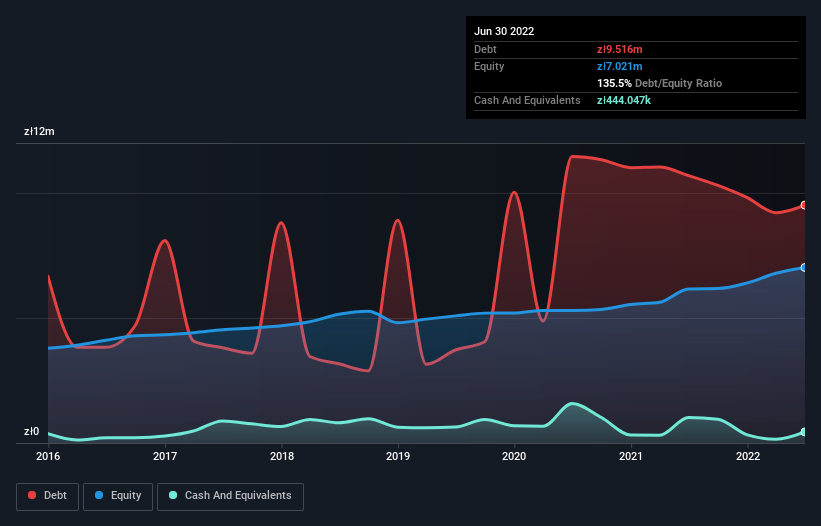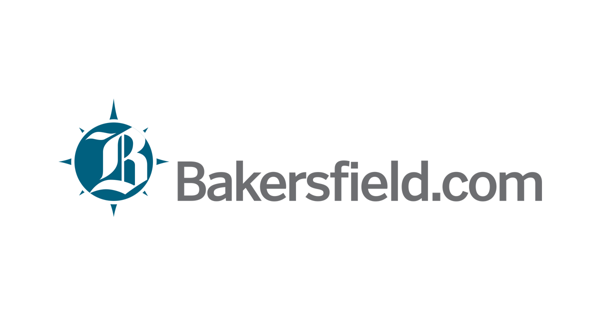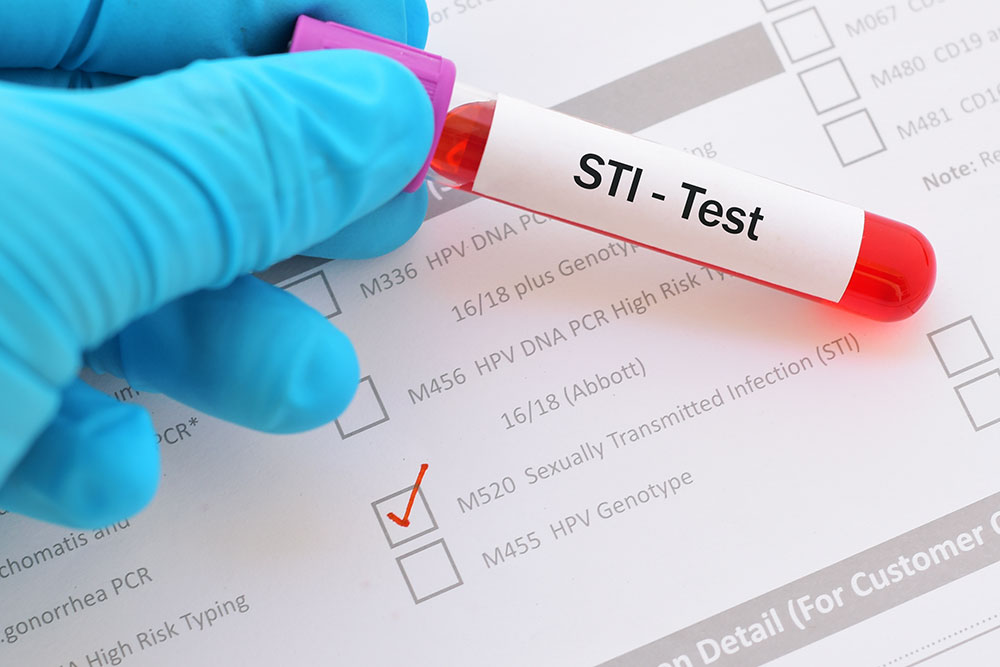Howard Marks put it nicely when he said that, rather than worrying about share price volatility, ‘The possibility of permanent loss is the risk I worry about… and every practical investor I know worries about.’ When we think about how risky a company is, we always like to look at its use of debt, since debt overload can lead to ruin. We note that Standrew S.A. (WSE:STD) does have debt on its balance sheet. But should shareholders be worried about its use of debt?
Why Does Debt Bring Risk?
Debt and other liabilities become risky for a business when it cannot easily fulfill those obligations, either with free cash flow or by raising capital at an attractive price. In the worst case scenario, a company can go bankrupt if it cannot pay its creditors. However, a more frequent (but still costly) occurrence is where a company must issue shares at bargain-basement prices, permanently diluting shareholders, just to shore up its balance sheet. Having said that, the most common situation is where a company manages its debt reasonably well – and to its own advantage. The first thing to do when considering how much debt a business uses is to look at its cash and debt together.
Check out our latest analysis for Standrew
What Is Standrew’s Debt?
You can click the graphic below for the historical numbers, but it shows that Standrew had zł9.52m of debt in June 2022, down from zł10.7m, one year before. However, it does have zł444.0k in cash offsetting this, leading to net debt of about zł9.07m.
WSE:STD Debt to Equity History November 9th 2022
A Look At Standrew’s Liabilities
Zooming in on the latest balance sheet data, we can see that Standrew had liabilities of zł8.22m due within 12 months and liabilities of zł4.58m due beyond that. Offsetting this, it had zł444.0k in cash and zł3.57m in receivables that were due within 12 months. So it has liabilities totalling zł8.79m more than its cash and near-term receivables, combined.
Standrew has a market capitalization of zł21.2m, so it could very likely raise cash to ameliorate its balance sheet, if the need arose. But we definitely want to keep our eyes open to indications that its debt is bringing too much risk.
We use two main ratios to inform us about debt levels relative to earnings. The first is net debt divided by earnings before interest, tax, depreciation, and amortization (EBITDA), while the second is how many times its earnings before interest and tax (EBIT) covers its interest expense (or its interest cover, for short). The advantage of this approach is that we take into account both the absolute quantum of debt (with net debt to EBITDA) and the actual interest expenses associated with that debt (with its interest cover ratio).
Weak interest cover of 2.0 times and a disturbingly high net debt to EBITDA ratio of 5.1 hit our confidence in Standrew like a one-two punch to the gut. This means we’d consider it to have a heavy debt load. However, one redeeming factor is that Standrew grew its EBIT at 11% over the last 12 months, boosting its ability to handle its debt. The balance sheet is clearly the area to focus on when you are analysing debt. But it is Standrew’s earnings that will influence how the balance sheet holds up in the future. So when considering debt, it’s definitely worth looking at the earnings trend. Click here for an interactive snapshot.
But our final consideration is also important, because a company cannot pay debt with paper profits; it needs cold hard cash. So we clearly need to look at whether that EBIT is leading to corresponding free cash flow. Looking at the most recent three years, Standrew recorded free cash flow of 36% of its EBIT, which is weaker than we’d expect. That weak cash conversion makes it more difficult to handle indebtedness.
Our View
While Standrew’s net debt to EBITDA makes us cautious about it, its track record of covering its interest expense with its EBIT is no better. At least its EBIT growth rate gives us reason to be optimistic. When we consider all the factors discussed, it seems to us that Standrew is taking some risks with its use of debt. While that debt can boost returns, we think the company has enough leverage now. When analysing debt levels, the balance sheet is the obvious place to start. But ultimately, every company can contain risks that exist outside of the balance sheet. For instance, we’ve identified 5 warning signs for Standrew (3 make us uncomfortable) you should be aware of.
Of course, if you’re the type of investor who prefers buying stocks without the burden of debt, then don’t hesitate to discover our exclusive list of net cash growth stocks, today.
Valuation is complex, but we’re helping make it simple.
Find out whether Standrew is potentially over or undervalued by checking out our comprehensive analysis, which includes fair value estimates, risks and warnings, dividends, insider transactions and financial health.
View the Free Analysis
Have feedback on this article? Concerned about the content? Get in touch with us directly. Alternatively, email editorial-team (at) simplywallst.com.
This article by Simply Wall St is general in nature. We provide commentary based on historical data and analyst forecasts only using an unbiased methodology and our articles are not intended to be financial advice. It does not constitute a recommendation to buy or sell any stock, and does not take account of your objectives, or your financial situation. We aim to bring you long-term focused analysis driven by fundamental data. Note that our analysis may not factor in the latest price-sensitive company announcements or qualitative material. Simply Wall St has no position in any stocks mentioned.
Discovered on: 2022-11-09 05:21:23
Source: Standrew (WSE:STD) Has A Somewhat Strained Balance Sheet


